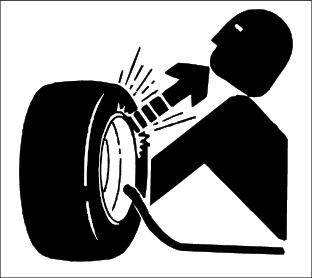for 4200, 4300, 4400 and 790 Compact Utility Tractors 59-Inch
Introduction
Safety Signs
Preparing Vehicle
Tractor Ballasting Requirements
Installing
Removing
Operating Machine
Service Machine Safely
Service
Troubleshooting
Storing Attachments
Assembly
Specifications
John Deere Service Literature
Quality Doesn't End When You Invest In A Deere
CopyrightŠ Deere & Company

Preparing Vehicle
Preparing the Tractor
Tractor Requirements
Tractor must be equipped with the following options to complete installation of the snowblower:
ˇ BM19575 Front Hitch Kit (4000 series tractors).
ˇ BM16855 Front Hitch Kit (790 series tractor).
ˇ BM19576 Mid Drive Shaft (4000 series tractors).
ˇ BM16856 Front PTO Kit (790 series tractor).
ˇ BM19997 Orifice Kit (790 series tractor).
ˇ Dual Selective Control Valve.
ˇ Rear Wheel Ballast required.
ˇ Must have tires set in the narrow position. Even in this position, some tire widths may exceed snowblower width.
Tractor Ballasting Requirements
Choose one of three ballast methods:
1. Install maximum rear wheel weights.
2. Fill rear tires to approximately 75% full with calcium chloride-water solution.
3. Fill ballast box with sand.
NOTE: See your tractor operator's manual or your John Deere dealer for more information on rear ballast.
Check Tractor Tire Pressure
1. Check tractor tires for damage.
2. Check tractor tire pressure with an accurate gauge.
3. Refer to Service-Miscellaneous section in the tractor operator's manual for proper tire pressure information.

